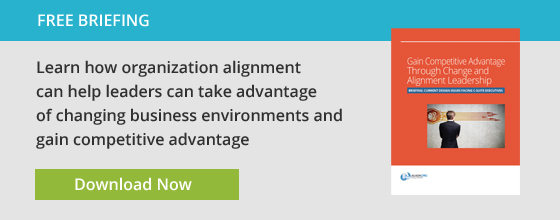Today’s marketplace has become an environment of continuous change. As a result, many businesses struggle to adapt as multiple areas of their organizations simultaneously experience change of some sort. In a recent webinar, I discussed how change platforms can facilitate this new environment of change and help businesses keep up with the new status quo of change.
As explained, a change platform combines traditional change management and program management into one. As a result, it produces a more a sustainable and lasting system to support continuous change in an organization. It is an ecosystem that will support ongoing change without having to ramp up and ramp down change management and program management tools, training, skills, and processes each time a significant change is introduced in the organization. In essence, the change platform is “always-on,” ready to support the next change.
A change platform acts like the muscles in the human body, and they are can be developed and strengthened. Change muscles are the capabilities in the organization that are necessary to orchestrate the change. Like muscles in a body, you must exercise them to maintain fitness. The same is true for a successful change platform—you must assess, develop and maintain the fitness and strength of the various components that make-up the change platform.
Of course, some components of a robust change platform are hard to build and sustain, so organizations may supplement their internal capabilities with select external resources or partners. Regardless of how the platform is developed, it is necessary to have all change muscles in place so they can spring into action as the next big change hits (which it inevitably will).
Here are the components of a strong change platform:
A change approach. There are many change approaches, models, or theories available. I suggest choosing and executing an approach that is well researched and adequately fits your organization. We see a number of organizations spend a lot of time and money searching for the best approach. In our opinion, we would much rather see organizations spend their time and resources on implementing, training and using a fit-for-purpose change approach than seeking the absolute “best” approach.
Change Tools. To be effective, a change platform must have tools that align with the approach. The best tools are not spreadsheets or tools that someone in the background fills out. Instead, they are means of engaging members of the organization in meaningful dialogue about the change. Look for tools that tee up the right change issues and conversations. When organization members feel engaged and feel like the tough issues are being address, change happens. Don’t settle for clever analysis tools but insist on tools that provoke dialogue and drive behavior change.
Build Capability. Armed with an approach and tools, you are ready to teach members of the organization the language, science, and art of change. Much of change management is intuitive and will resonate readily with people. However, for change management to be a benefit to your organization, people need to understand how to apply the approach, when to use the tools, and how to engage the organization in change management discussions and activities. Capability building is the key.
For many companies that we work with, we partner with them as they build out their change platform capabilities by offering or leveraging a change approach and by providing a tool kit. Then we help organizations build internal capability. As internal resources grow into the capacity to lead change initiatives, the organization can now claim that its change platform is starting to mature and is able to support continual change events in the organization.
Change Structure. When building a platform to implement and sustain change, it is helpful to structure your change agents and change leaders. A change structure provides clarity on roles and responsibilities. This helps ensure that all organization members receive the communication and support they need to tackle the change in an organized and “planful” way. A good change structure will define an operating rhythm and cross-boundary linkages to help keep the disparate parts of the organization connected and integrated during change.
Change plans. Not too long ago, we worked with an organization undergoing a global IT transformation. When we joined the effort, the organization had already begun the process by adopting an appropriate change approach with some tools. We added a few tools and helped build the internal change capability. Together, we worked to develop a change structure and implementation plan. Because they were resource constrained, we stuck with them as they operationalized the plan, and our team paired with their internal resources to help drive the change forward through project planning and execution.
Execution involved, among other things, facilitating workshops, orchestrating communications, and running meetings. Additionally, the change team helped develop the inner workings of the future-state model by creating new job descriptions, process flows, procedures, decision rights, and spending approval levels. By attending to these more tactical but important execution issues, the organization was able to transition from blueprint to an implemented, future-state reality.
Measure the change. With continuous change, you need to have the ability to measure the effectiveness of a change and adjust as necessary. Again citing the example above, as part of our work with the IT organization we also helped create mechanisms to continuously measure the progress being made and the sustainability of the behavior change being sought. The topic of measurement deserves much more attention than I can provide here, but I invite you to read one of my other blogs dedicated more fully to this aspect of change. (Read more here)
Organizations must ensure that, at a minimum, the six components of a change platform are in place and effective so that the organization can keep up with the continual string of changes it confronts. Having a repeatable and portable platform across the entire organization will accelerate change. In a marketplace demanding constant change, a well-structured and fit change platform can create the organizational stamina necessary to thrive on continuous change.

